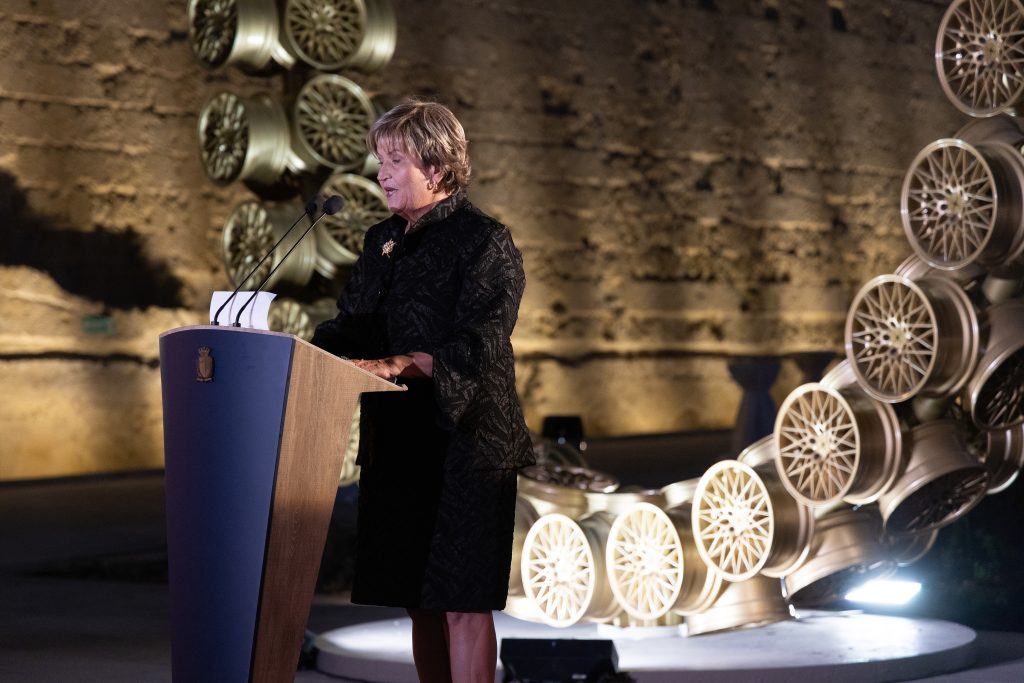Artist Joana Vasconcelos
Under the stewardship of the MICAS board, this previously inaccessible complex of historic buildings has now been reopened to the community as Malta’s newest cultural destination.
Prime Minister Robert Abela said the opening of MICAS was a transformative moment for the island-nation of Malta, and paid tribute to all the ideators and workers who had brought the concept to fruition.
“MICAS symbolises the collective progress of this country, and now I believe it is part of the quality leap we have achieved in these last years, with a cultural platform for art, that sends out our message of faith in artists, who will document our history with their work,” Abela said.
“Thanks to this progress, Malta can truly be a centre for artistic creativity in the Mediterranean, and a natural home for artists.”
MICAS executive chair Phyllis Muscat outlined the evolution of a concept, which was formally kick-started in 2018, to respond to decades-long calls by Maltese artists for a contemporary arts space, and paid tribute to the efforts of the MICAS board in reaching out to the world of international art.
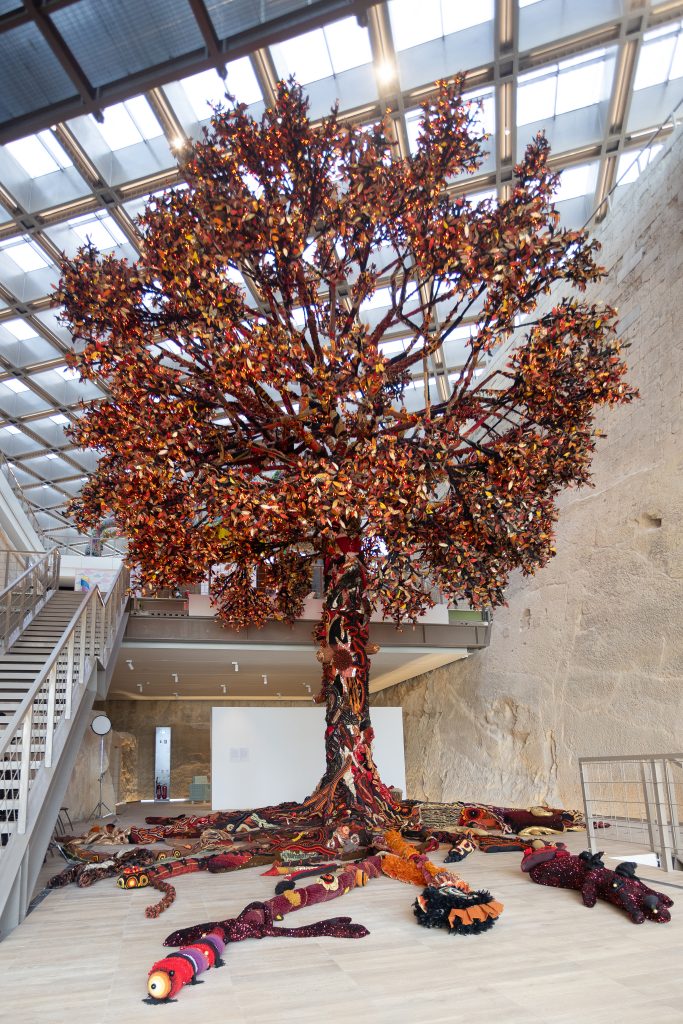
The Tree of Life
“It was a challenge for us to present what was essentially a start-up, with no history or a completed building, and from a small nation to boot… our enthusiasm pushed us to develop this concept and build up interest in the circles of international art, and we achieved this concretely through the networks we built with international artists, curators, museums, foundations and art historians, and the acquisitions we made.”
She thanked MICAS’s board, Malta ambassador of culture Francis Sultana, Dr Georgina Portelli, Dr Claire Cassar, Gabriella Agius, Patrick Camilleri and Martin Scicluna.
The artist Joana Vasconcelos gave thanks to the MICAS board for inviting her to open Malta’s newest contemporary arts museum and paid tribute to the MICAS board.
“I’m really proud of Phyllis Muscat: what we are doing tonight is truly incredible…
“It is very rare and unique for an artist to be asked to open a museum. Here I found the temples, the Mediterranean Sea, wonderful food and architecture… so from the bottom of my Portuguese heart, I will never forget you – I can never be grateful enough for this opportunity for having worked with these people.”
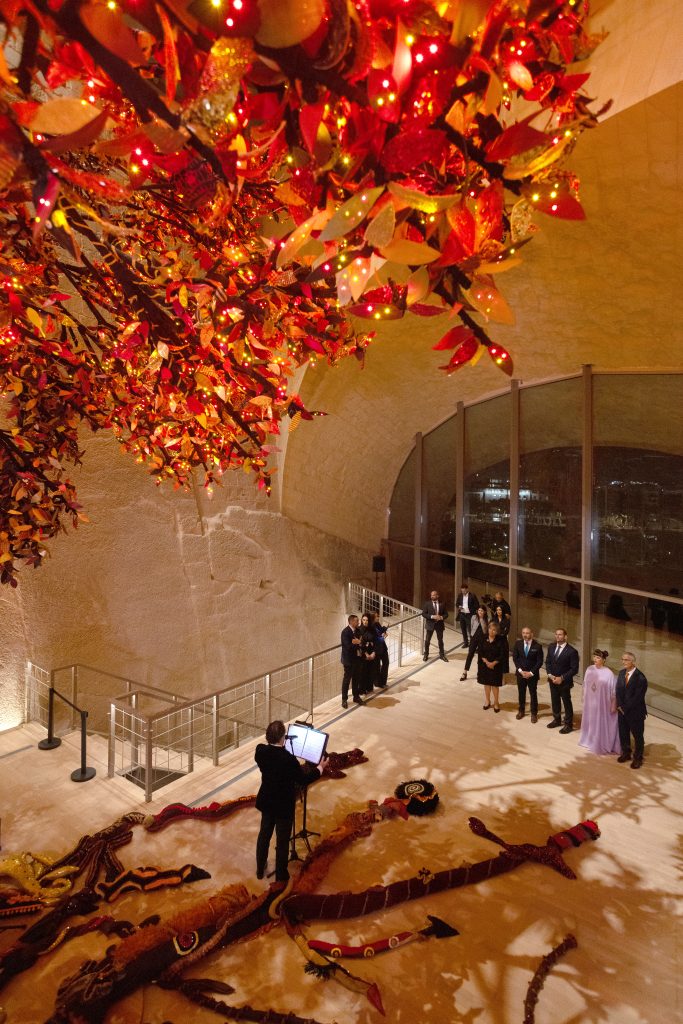
The Tree of Life, with baritone Rui de Luna Vasconcelos singing a song composed for the artwork
Minister for National Heritage and the Arts Owen Bonnici toasted the historic moment, in which 4,000sq.m of previously inaccessible land was being returned to the community in the form of a cultural infrastructure project. “It is a strong investment in the people’s well-being, families, and our quality of life… art not only beautifies and feeds our souls, but it strengthens the nation. A future without culture would be a future without humanity.”
The director-general of the Department for Restoration and Preservation, architect Norbert Gatt, said a large dose of determination “and perhaps also faith”, was needed for MICAS to come alive in the site of the former Ospizio. “We were convinced this was a unique canvass for the MICAS galleries, where history and contemporary art could come together. IPOstudio’s solution of a steel roof enveloping the site, gave it this continuum between past, present and future.”
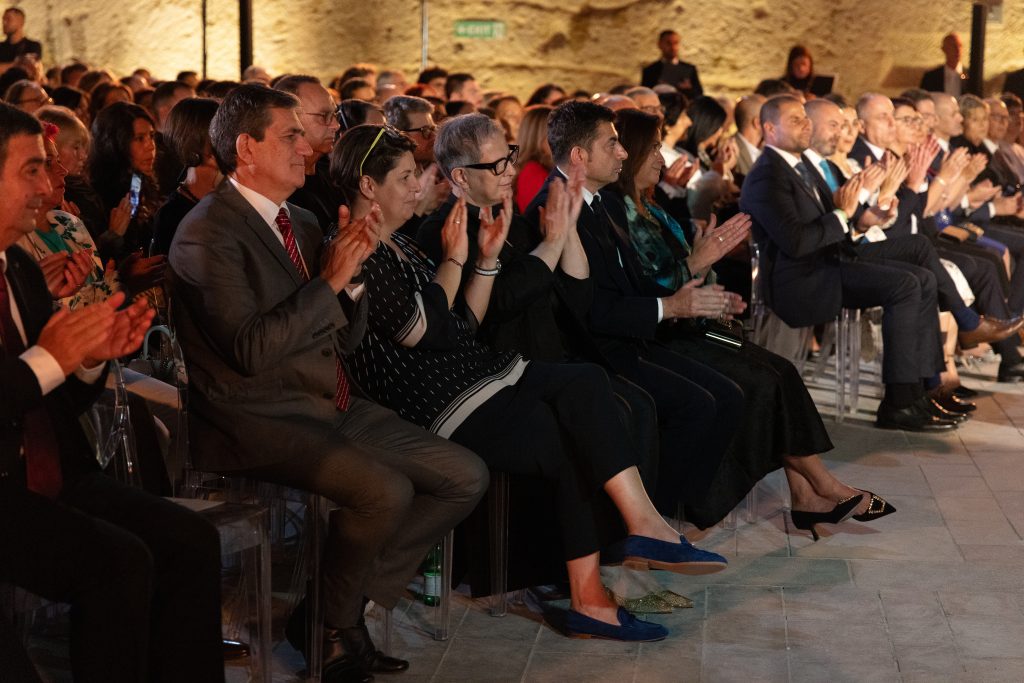
Members of the MICAS board at the inauguration ceremony
Guests at the MICAS inauguration took their seats at the foot of Vasconcelos’s Solitaire – a creation which reproduces a diamond ring on a monumental scale, made up of 110 golden car rims and crowned by an inverted pyramid composed of 1,450 crystal whisky glasses.
At the end of the speeches, the Prime Minister and Joana Vasconcelos later made their way through the MICAS esplanade and to the Galleries, where together with Phyllis Muscat, officially declared MICAS open to the public, with a fireworks display crowning off the official ceremony.

The Garden of Eden
Viewers at MICAS’s ground-floor were greeted by Valkyrie Mumbet, which honours Elizabeth “Mum Bett” Freeman, an enslaved woman whose court battle for her freedom in 1781 helped make slavery illegal in Massachusetts. The large-scale installation is part of Vasconcelos’s Valkyries series, named after Norse female war goddesses, which pays homage to inspiring women.
Also immediately visible at the lowest level, was the towering Tree Of Life, with its 110,000 hand-stitched and embroidered fabric leaves, fungi, mosses and lichens, stumps and branches, bringing to life the immense spaciousness of MICAS’s raw and restrained interior. A musical composition specifically created for Tree Of Life was sung by the baritone Rui de Luna Vasconcelos, who also sang other works in the Portuguese tradition.
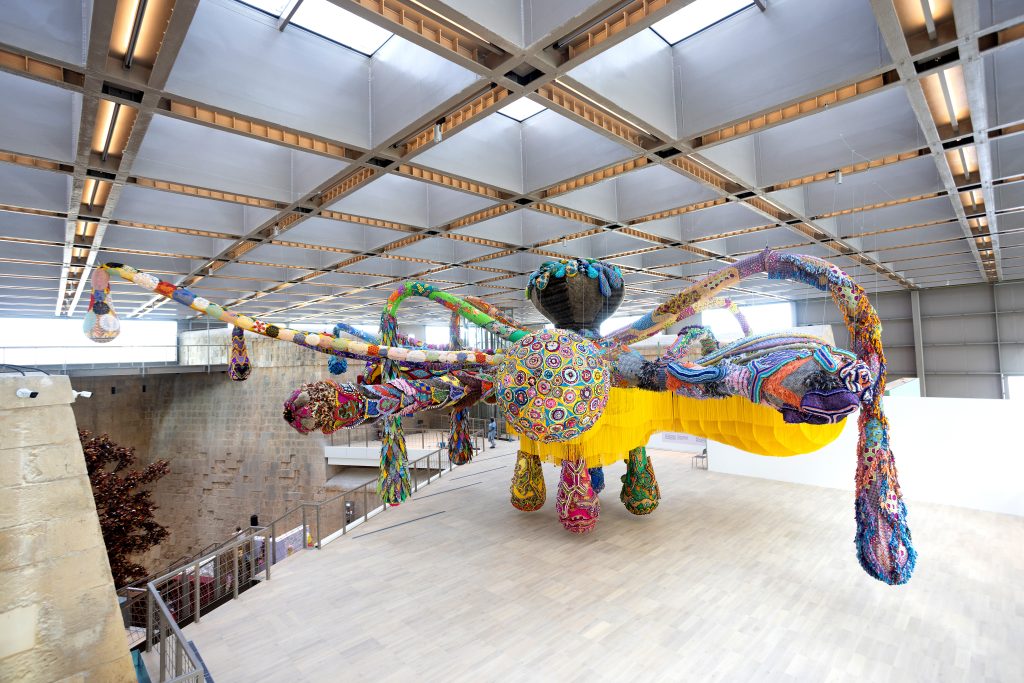
Valkyrie Mumbet on the top floor or MICAS
Other works exhibited at MICAS, which opens to the public in November, are The Garden of Eden, Loft, Vista Interior, Aspirin Sofa, Euro-Visão [Euro-Vision], Valletta, and Spin.
Out on the MICAS esplanade, guests could also see some of the few acquisitions of MICAS, namely the Swiss artist Ugo Rondinone’s the radiant, and British artist Conrad Shawcross’s The Dappled Light of the Sun. Together with the soon-to-relocated Sea Cave (Entrance) by the Spanish artist Cristina Iglesias, these pieces will be permanently located at MICAS, where a sculpture garden is also set to be completed in 2025.
Since 2018, MICAS has hosted these artists for its annual International Art Weekends and Conversations series, as well as American artist Michele Oka Doner, whose loaned artwork The Palm Goddess for Malta is perched atop one of the plinths at the Teatru Rjal in Valletta; and French artist Pierre Huyghe.


